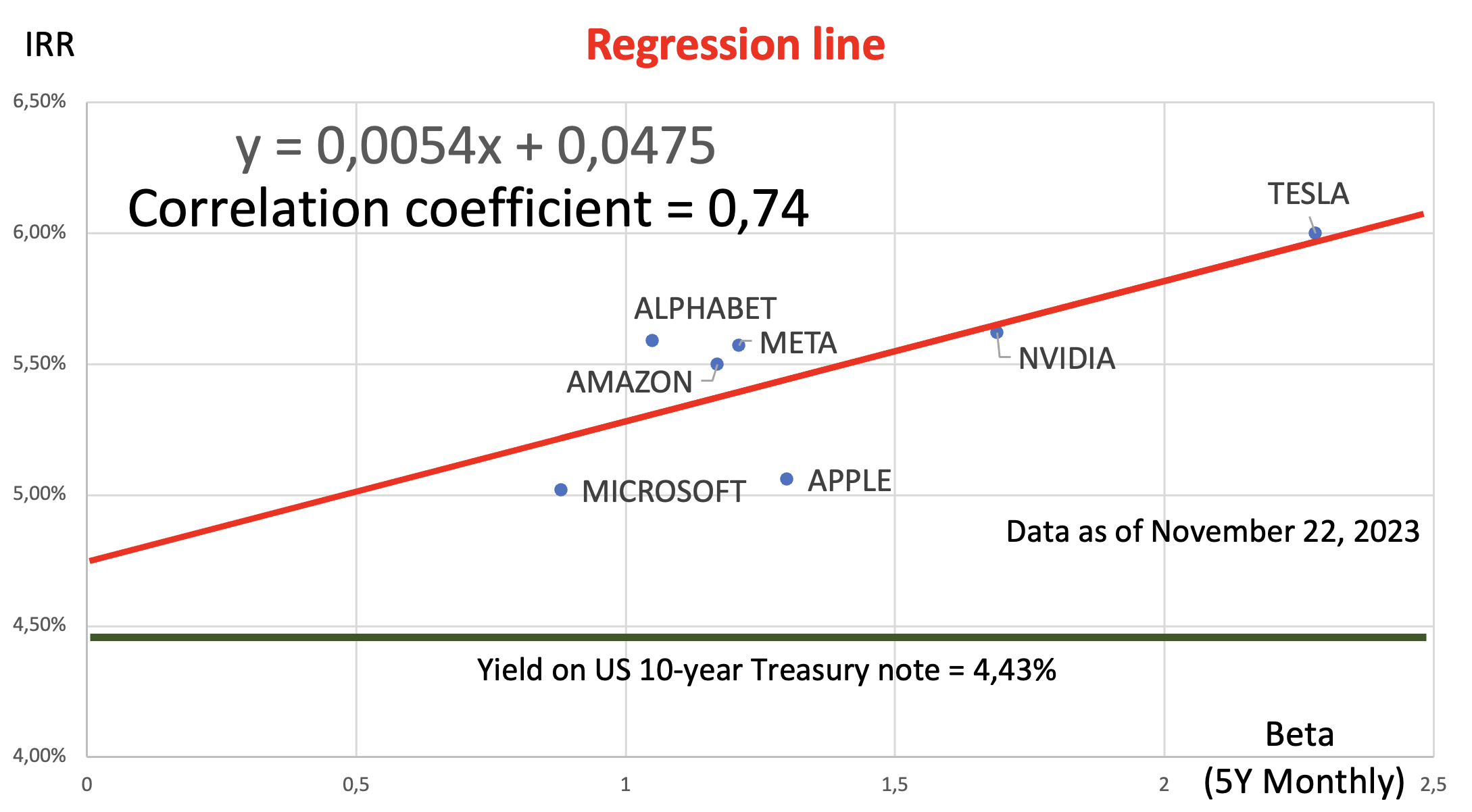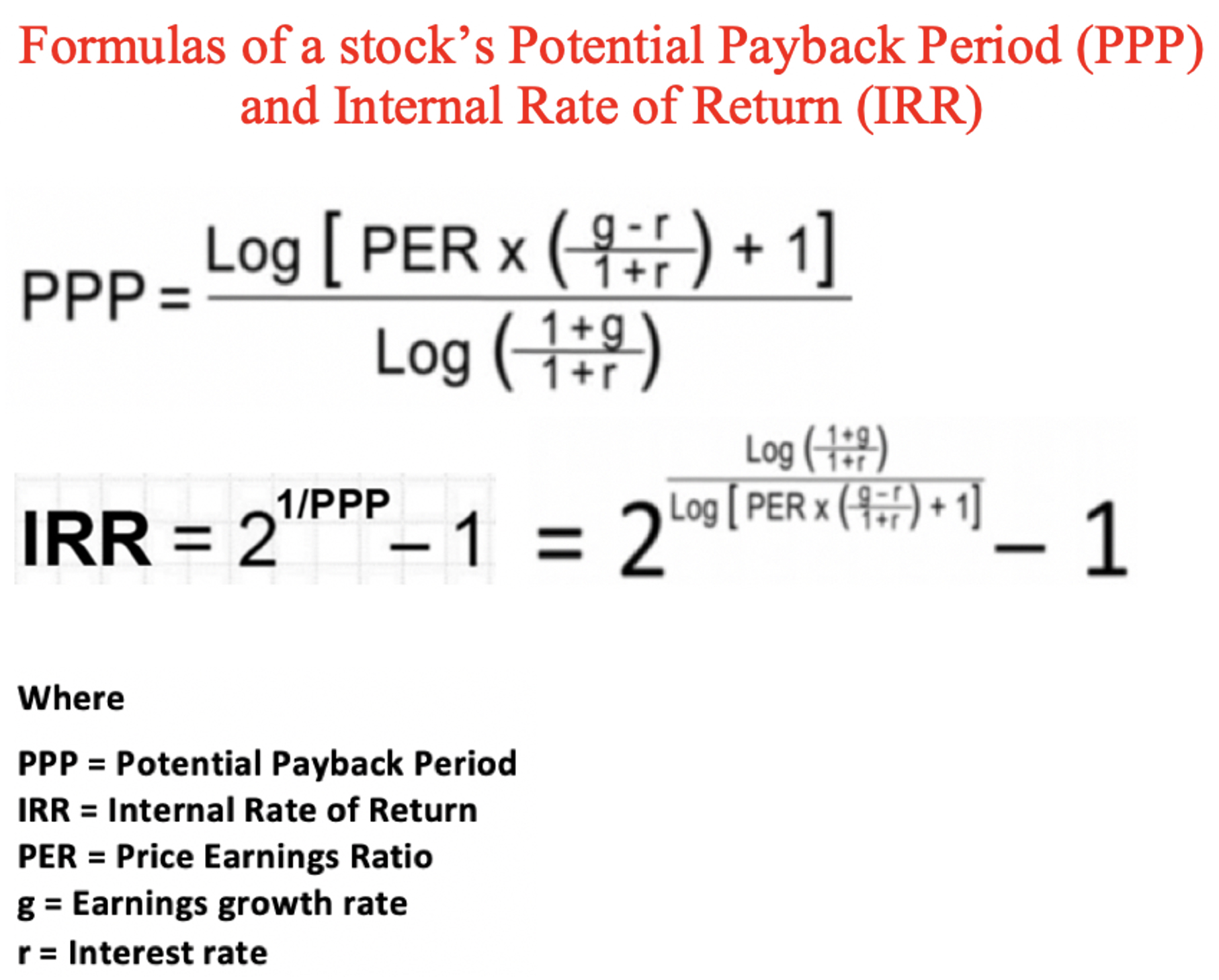VALUATION OF THE "MAGNIFICENT SEVEN" U.S. TECH STOCKS
(Alphabet, Amazon, Apple, Meta, Microsoft, Nvidia, Tesla)

Regression line
Y-AXIS : Internal Rate of Return (IRR)
A stock’s internal rate of return (IRR) is directly derived from its
potential payback period (PPP). Defined as the period of time necessary
to equalize the current share price with the sum of future earnings per
share discounted to their present value, the PPP is basically a
mathematical adjustment of the price earnings ratio (PER) to earnings
growth rate. It measures a company’s profit-making capacity (or earnings
potential) which basically determines the value of the company’s stock.
The shorter the PPP the stronger the company’s profit-making capacity
and the more attractive its stock. The IRR is the discount rate which
allows the investor in a given share to potentially double their
investment through the cumulation of earnings per share over the period
corresponding to the PPP which has been calculated for the stock. The
higher the IRR the more attractive the stock. The IRR of a stock should
normally be higher than the yield of a risk-free long-term bond (such as
the 10-year U.S. Treasury bond in our example), with the difference
between the two rates representing the risk premium that characterizes
each stock.
See
https://stockinternalrateofreturn.com/
X-AXIS : Beta
The Beta is a measure of the risk associated with a company (a
coefficient of share price volatility in our example).
Interpretation
- Companies practically on the regression line (Nvidia, Tesla) are correctly valued.
- Companies above the regression line (Alphabet, Amazon, Meta) are undervalued.
- Companies below the regression line (Microsoft, Apple) are overvalued.
Data as of November 22, 2023.
Any inflection in earnings growth rates, as indicated by revisions in
quarterly earnings estimates, must be closely monitored as it
immediately impacts the PPP and the IRR.

Demonstration at https://www.stockinternalrateofreturn.com/Mathematics.html